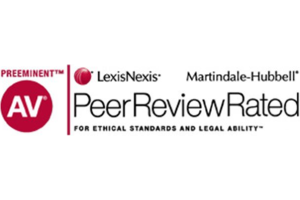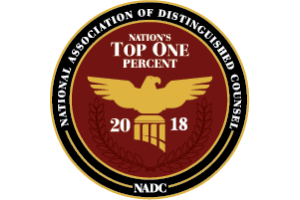- Free Consultation: (844) 268-7775 Tap Here to Call Us
Indiana’s Limited Premise Liability for Churches Does Not Extend to Injuries Occurring in Church Areas Not Primarily Used for Worship Services
The Indiana Court of Appeals recently found against a church in an Evansville premise liability lawsuit arising out of an injury a volunteer sustained while working on a project on the church’s premises. In Calvary Temple Church of Evansville, Inc. v. Kirsch, Gerard Kirsch (Kirsch), a member and trustee of Calvary Temple Church of Evansville (Calvary), volunteered to lead a project to build a shed on the church’s property to house the church’s van. During the final stages of the project, Kirsch fell off a ladder and lacerated his arm requiring surgery, which resulted in a permanent injury. Kirsch filed a lawsuit against Calvary for negligence resulting in his injury. Calvary moved for summary judgment arguing it was not liable for Kirsch’s injury under Indiana Code § 34-31-7-2, which limits the liability of non-profit religious organizations in premise liability claims. The trial court denied Calvary’s motion and Calvary appealed.
Under Indiana’s common law, a possessor of land is liable to invitees for a condition on land if the landowner (1) knows or with reasonable care would discover the condition and should realize it involves an unreasonable risk of harm, (2) should expect its invitees will not discover or realize the danger or will fail to protect themselves against it, and if the landowner (3) fails to exercise reasonable care to protect its invitees against the danger. However, Indiana’s legislature has enacted special protections for non-profit religious organizations.
Indiana Code § 34-31-7-2 states in relevant part as follows:
[A] nonprofit religious organization has only the following duties concerning persons who enter premises owned, operated, or controlled by the nonprofit religious organization and used primarily for worship services: (1) If a person enters the premises with the actual or implied permission of the nonprofit religious organization, the nonprofit religious organization has a duty to: (A) warn the person of a hidden danger on the premises if a representative of the nonprofit religious organization has actual knowledge of the hidden danger; and (B) refrain from intentionally harming the person.
On appeal Calvary argued the trial court erred in denying its motion for summary judgment because Kirsch’s injury occurred on its premises, which it owned and used primarily for worship services, Kirsch was not injured due to a hidden danger, and it did not intentionally injure Kirsch. In support of its argument, Calvary cited prior precedent in which the Indiana Court of Appeals found the term “premises” was unambiguous and included a church parking lot. However, here, the Court found Calvary’s cited precedent inapplicable, as the case Calvary cited dealt only with the term “premises” in the statute. As noted by the Court, the statute requires that the subject “premises,” in addition to being owned, operated, or controlled by the nonprofit religious organization, be also “used primarily for worship services.” The Court found the qualifying terms “used primarily for worship services” subject to more than one reasonable interpretation and therefore ambiguous. As such, the Court resorted to the rules of statutory construction.
Indiana’s rules of statutory construction provide that statutes in derogation of the common law must be strictly construed, and in attempting to fulfill the legislature’s intent in interpreting a statute, courts presume the legislature was aware of the common law when enacting legislation and did not intend to change it unless it did so in express terms or by unmistakable implication. Here, the Court reasoned “used primarily for worship services” could mean either (1) the entire premises even if only a portion of the premises are used primarily for worship services, or (2) only that part of the premises actually used primarily for worship services, for example, a main worship building and its parking lot, the latter being a necessary component for access to worship services. The Court noted that if “premises” was meant to include the entire premises, including those not used primarily for worship services, then the legislature would not have needed to add the qualifying language “used primarily for worship services.” The Court reasoned the legislature excluded from the statute’s scope those portions of a non-profit religious organization’s premises used only occasionally for worship services. As such, the Court held that “premises… used primarily for worship services” under the statute means only those portions of the premises that are primarily used for worship services, not the entire premises. As applied to the facts in Kirsch, the Court found no evidence designated by Calvary that the shed where Kirsch was injured was used primarily for worship services. Having rejected Calvary’s interpretation of the statute, the Court accordingly affirmed the trial court’s denial of Calvary’s motion.
You can read the full opinion here.














